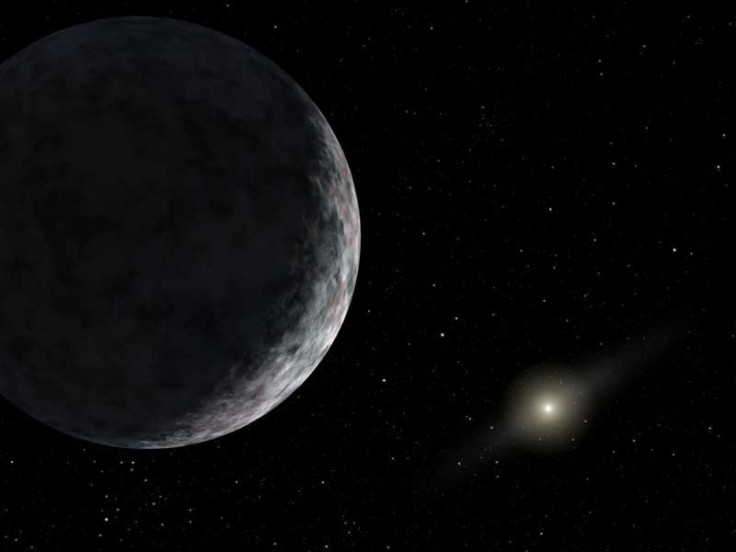Dwarf Planet Eris is Pluto’s Twin

The icy planet that lead to Pluto's demoting in our solar system is now identified to be almost identical to the ex-ninth planet.
In 2005, Eris was discovered by images taken in 2003. Initially, Eris was found to be larger than Pluto in size, which led some astronomers to believe that it could be the tenth planet in our system. However, because of continued debate and ongoing uncertainty, the International Astronomical Union (IAU) proposed that the community redefine the definition of what constitutes a planet. By 2006, the scientific community had decided to classify both Eris and Pluto to be dwarf planets-different from the category of planets. The issue still remains a controversy since that change.
In November of last year, Eris made appearances and was sighted by telescopes in Chile. After tracking the icy dwarf in more detail, astronomers have been able to make more detailed observations about its size and surface. Being able to spot Eris was in and of itself another challenge. The small window of time that the icy dwarf would block the faint star in passing gave star hunters a really limited time. Only three out of 26 different sites on the lookout were able to catch it.
With a previously measured diameter of somewhere around 2,400 kilometers, the team from Pierre et Marie Curie University and the Observatory of Paris found a new measure of 2,326 kilometers. The slightly smaller size makes it much closer in size with Pluto, which measures roughly 2,300 kilometers.
In addition, further studies of the surface on Eris was brighter than expected, which could suggest that the planet's unusual glow comes from the frost on its outer layers. Interestingly, this characteristic also makes it one of the brightest objects in this solar system.
Because of its large distance from Earth, it has been difficult to accurately make estimates about the planet's size or traits. Eris is almost three times farther from us than its twin Pluto. Although we now have a more precise measure of Eris' size, scientists remain uncertain about its measurements against Pluto's estimates. Because we're unsure about Pluto's exact size, Eris could still end up being larger or smaller in comparison. Even if they turn out to be twins, it is unlikely Pluto will regain its planetary status.
© Copyright IBTimes 2025. All rights reserved.





















